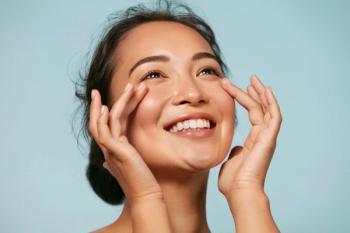
Natural Beauty Ingredients: Standing In for Synthetics
Can natural and organic ingredients help us depart from some of the beauty industry’s synthetic staples?
There’s nothing pretty when a beauty product doesn’t perform up to customer expectation. Mindful of this, some personal care marketers argue that certain key synthetic ingredients are vital to a product’s functionality or user experience.
Still others disagree. Is a synthetic ingredient really necessary if its only purpose is to provide aesthetic benefits-such as foaming or lathering-that consumers have been conditioned to expect? Or, when a body lotion is formulated to leave the user feeling almost “instantly dry,” this instant dryness most likely stems from a certain blend of synthetic ingredients. Some marketers may consider this added benefit a key product advantage, but others may feel differently.
“Is it really natural for people to feel ‘instantly dry’ after using a body lotion?” asks Brien Quirk, director of research and development, Draco Natural Products (San Jose, CA).
Quirk says that consumers who are well versed in natural products are often willing to give up-or don’t even expect-certain traditional product features. Rather, these consumers just want to be assured they are not absorbing toxins.
Quirk adds, “I guess I’m somewhat cynical about the use of synthetics and the fake sensations they create. Does the conscious consumer really want a simulated, ‘perfect’ experience using synthetics?”
David Bronner, president and CEO of Dr. Bronner’s Magic Soaps, believes that “when you develop a quality formula with a high level of natural ingredients, other types of ingredients are never necessary.”
Bronner’s products contain only natural ingredients. He says that any ingredient added to give a product a certain aesthetic quality, or to promote a greater ease of use, is unnatural and unnecessary. “The aesthetic qualities of a product are irrelevant and not a reflection of how well a product works,” he says. “Our moisturizers may take an extra 20 seconds to rub in, but it’s the moisturizing benefits that count most-and our lotions work well.”
He adds, “We don’t market any products that are trade-offs or compromises.”
In fact, he says, it may be a lesser product that requires some of these “boosters.” For example, he explains, the more diluted a product, the greater the need for extra unnecessary ingredients such as a viscosity booster.
Still, some marketers may feel that without some of the behaviors expected of, say, a shampoo, users may feel they aren’t getting the best experience.
Cara Welch, PhD, vice president of scientific and regulatory affairs for the Natural Products Association (NPA; Washington, DC), agrees that for some, the decision of whether or not to include a certain synthetic ingredient is more about improving the consumer’s perception of how well that product is working, rather than how well the product actually works.
“Consumers in the United States have grown very used to certain product features,” Welch says. “For example, we often believe that a shampoo needs to lather or else it’s not getting your hair clean, which isn’t always true.”
No Natural Equivalent?
Silicone is one example of a synthetic ingredient that is often used by personal care brands-even those that consider themselves “pro-natural.” It’s also an ingredient that many experts say has no natural equivalent.
Hannah Shenk, cofounder of M&J Dog Essentials, a holistic, aromatherapy canine bath and body line, is a strong supporter of natural. “We wanted our products to be as natural as possible without sacrificing functionality,” she says. “All of our natural ingredients are plant derived, but we left in some ingredients that helped improve their effectiveness.”
For instance, the brand chose to retain the use of dimethicone in the line’s bath product Show Dog Shine. Dimethicone is the most widely used type of silicone-based polymer and is non-toxic, according to Cosmeticsinfo.org, a website sponsored by the Personal Care Products Council and its member companies. According to the website, dimethicone’s many cosmetic uses include acting as a hair- and skin-conditioning agent.
Shenk says she and her team decided to use silicone after much debate. “We were on the fence about it and weighed the pros and cons. Our Show Dog Shine is the one product that benefited from the use of dimethicone, and it made a huge difference in the product’s aesthetic qualities,” she says.
Also, just because an ingredient is synthetic doesn’t mean it’s not safe. Shenk adds that the dimethicone the brand uses is not an ingredient that can be harmful to dogs or their skin. Many experts agree on the safety of dimethicone. Dimethicone’s approved use as a skin-protecting active ingredient in over-the-counter drug products has been reviewed by FDA. The ingredient is also allowed to be marketed in cosmetics in Europe, according to the general provisions of the Cosmetics Directive of the European Union, which bans many of the cosmetic ingredients that are allowed in the United States. Additionally, the association Cosmetic Ingredient Review’s expert panel says it is unlikely for any type of silicon polymer derivative to be significantly absorbed in the skin, due to the large molecular weight of these polymers.
Still, NPA prohibits any type of silicone in beauty products that are certified under its Natural Seal Program.
“Some brands do struggle with the decision of whether or not to use silicones, but [silicones] will remain on our prohibited list-not because we believe they are harmful in any way, but because they are not from a renewable source,” says NPA’s Welch.
To Foam or Not to Foam
Foaming is another debatable aspect of a natural formulation. Some experts say that achieving a high level of foam using only natural types of surfactants can be a challenge-especially when the formula is a sulfate-free shampoo. Surfactants are ingredients that help a product create lather, or foam, when mixed with water. Synthetic surfactants are derived from petrochemicals, while natural surfactants (known as oleochemicals) can be derived from palm oil or tallow.
According to Procter & Gamble’s website, surfactants add more than just aesthetic properties; they help a product function better by increasing its ability to loosen and remove dirt and oils, while keeping them emulsified, suspended, and dispersed so that they don’t settle back onto the surface being cleaned.
For various reasons, many natural brands avoid synthetic surfactants, including the most controversial ones such as sodium lauryl sulfate. Organic brands have even fewer surfactant options.
“We’ve made incredible body washes and soaps using organic oils that lather tremendously well and are on par with any conventional product,” says Luke Penney, founder and CEO of organic brand LEAP Organics.
However, Penney admits the brand has not had the same lathering luck with shampoo formulas yet. “We have not yet been able to make a shampoo using organic oils that lathers to the extent consumers typically desire,” he explains. “Because all of the products we launch meet or exceed customers’ expectations for a product’s efficacy, we wouldn’t launch an organic shampoo at this time unless it could meet the same expectations.”
Instead, Penney explains, the company has been focusing on other products first. Still, he is hopeful that it will one day be possible to formulate a foaming shampoo using organic oils.
Supporters of sulfate-free shampoo say that a product’s amount of lather is not an indication of its cleansing ability-despite what consumers may think.
WEN by Chaz Dean, a hair-care line created by Los Angeles–based celebrity stylist Chaz Dean, in partnership with Guthy Renker, has taken on the challenge of changing the way consumers feel about lathering shampoos. (The brand has never claimed to be 100% all natural, but its products are formulated with many natural ingredients-and without any of the most controversial ones.) WEN’s infomercials explain to viewers that many lathering shampoos are in fact bad for your hair. Dean advises viewers to ditch all shampoos and instead use the brand’s non-lathering Cleansing Conditioner for healthier hair.
M&J Dog Essentials also developed a shampoo that doesn’t lather much-but rest assured, it will get a dog squeaky clean, says Shenk. “We use a natural cleansing agent, a vegetable-derived surfactant-but no detergents and no artificial agents,” she says.
Quirk suggests that one surfactant solution for natural brands might be to find the right blend of natural ingredients.
“I agree that coconut oil–based natural detergents don’t make very much in foam or suds, but saponins work well, and even some plant proteins can have sudsing effects. Natural polysaccharides from fruit and herbs can add viscosity, as well as deliver moisturizing effects. Combining saponins with glycerin may also help to thicken and hold foam longer,” he adds.
Preservative Solutions
Natural brands also try to avoid using parabens as preservatives, as well as synthetic antioxidants like BHT (butylated hydroxytoluene). However, finding natural preservative solutions has been a challenge for some beauty companies. Why?
The most effective types of preservatives typically need to have antioxidant and antimicrobial properties. Also, challenges can arise if a natural preservative has any color or odor, even at a low concentration, explains Dr. Anurag Pande, vice president of scientific affairs for ingredients supplier Sabinsa (East Windsor, NJ). “Any level of color or odor can affect the appearance and fragrance of the end-formulation, so the next challenge is to prepare a preservative with the least amount of color or odor, without sacrificing efficacy.”
According to Danielle Black, ingredient manager for The Scoular Co. (Minneapolis), one of the most interesting developments in natural ingredients for beauty products is antioxidants. “Rosemary extract can work well as an antioxidant, and there are also some interesting ingredients coming onto the market such as olive leaf extracts,” says Black.
As a distributor, The Scoular Co. supplies ingredients to the health food and nutraceutical markets-some of which carry over into cosmetics. “Beauty companies want to come to a supplier like us so they can say their product is ‘healthy enough to eat,’” she says.
Black often advises formulators to partner with a specialized antioxidant company, which can create a customized solution for a product. However, in addition to an antioxidant, many cosmetic formulations may require a stronger preservation system that may also include antimicrobial ingredients.
Dr. Bronner says his brand has been able to handily overstep preservation issues. “If you don’t use a lot of extra unnecessary ingredients that need to be preserved, you won’t have any issues,” he explains. “For example, the more a product is diluted with water, the greater the need for a stronger preservation system.”
Penney agrees and says that the products in the LEAP Organics line are preserved naturally, using organic ingredients. “All of our soap products and our oil-only products are either self-preserved or can be properly preserved using natural preservatives like vitamin E and organic rosemary extract.”
The preservative used in M&J Dog Essentials products was the first to be Ecocert approved, says Shenk. “It is paraben and formaldehyde free, and it’s not tested on animals,” she says.
Another company, JUICE Beauty, says it is one of few natural beauty brands that has managed to develop a full range of skincare products that are naturally preserved. In fact, it was one of the first companies in the beauty industry to create a strong preservation system without using parabens, according to Karen Behnke, founding partner. “We switched to a new food-grade preservative system, the same one that is used in organic food snack bars,” she explains.
According to Behnke, the line’s preservative system is ever-evolving. “We have recently upgraded this system again as we moved away from preserving with phenoxyethanol. However, I would like to note that we have always used sage-derived phenoxyethanol,” she explains. “Additionally, we have spent over one year stabilizing our formulas without EDTA (ethylenediaminetetraacetic acid), so I’m happy to announce that all of our products are now EDTA free.”
Future Innovation
Marketers, suppliers, and formulators all agree that as the demand for natural products continues to grow, we’ll see some positive changes happening in product development. It may soon be possible for formulators to create new natural and organic personal care products that offer consumers even more convenience or greater ease of use.
Even Bronner agrees that there is room for improvement with regard to ingredient innovation. However, he believes it is up to personal care companies to be a catalyst for change. “There are always new organic ingredients on the market for formulators to experiment with, and it’s the responsibility of natural and organic brands to be innovators,” he says.
“We’ll soon see a definite push for new, natural ingredient discoveries to replace more synthetics,” predicts Draco’s Quirk.
Joanne Ferra, creative director of Chaz Dean Studio, is also optimistic. “We are always excited for the future and the fact that further testing may reveal new, unknown benefits that natural and plant-based ingredients contain.”
Shenk hopes someone finds a new plant-based ingredient with surfactant properties, which she feels is a real possibility. “There are a million different plants out there, and we haven’t tested them all yet,” she says.
“There are many solutions out there that we haven’t found yet-and we’re not even close to exhausting all of the possibilities,” agrees Satish Nayak, research director for ingredients supplier Kemin (Des Moines, IA). “But although there is a natural alternative for many ingredients, their compatibility is what will often cause challenges when developing a natural formulation.”
When a Natural Alternative Doesn’t Exist
Even a certification program like the Natural Product Association’s makes exceptions allowing for a shortlist of synthetic ingredients in a personal care product. Personal care companies seeking NPA’s Natural Seal certification are allowed to use a handful of synthetic ingredients in a formula-as long as those ingredients comprise no more than 5% of the total formulation, excluding water.
NPA compiled its list of allowed synthetic ingredients based on the commercial availability of natural alternatives. The list is evaluated on a consistent basis by NPA’s steering committee, and certain approved synthetic ingredients may become prohibited once natural alternatives become available.
“The list is composed mainly of preservatives, as well as a few quaternary ammonium compounds,” says Cara Welch, PhD, NPA’s vice president of scientific and regulatory affairs. “We made sure that the synthetic preservatives that are allowed aren’t harmful and that we included effective antimicrobials and antibacterials. We also made sure they will work across a large pH range, and that they can be used in a number of different types of product categories.”
There are also four quaternary anti-static hair conditioners on the list. These are compounds that can be used in a hair conditioner, for example, to provide smoothing or shine benefits. “These were more difficult to choose,” says Welch. “We wanted to keep it limited, so we chose four that are naturally derived.”
Sustainable, Organic, and Fair Trade
Sustainable, organic, and fair-trade ingredients can have a positive effect on the planet and people. They can also increase a product’s effectiveness.
It would be difficult to find a company more dedicated to sustainability than Dr. Bronner’s Magic Soaps. The brand includes bar and liquid soaps, body-care, and hair-care products certified under the USDA National Organic Program. The majority of its products are also certified under the Institute for Marketecology’s (IMO) “Fair for Life” program, a third-party certification program for social accountability and fair trade in agricultural, manufacturing, and trading operations.
Bronner makes sure that his entire ingredients supply chain is also certified organic and fair trade, especially for its palm oil. Bronner’s bar soaps are made with approximately 40% palm oil by weight. Certified-organic palm oil has been used exclusively in Bronner’s soaps since 2004, but in 2007 the company began growing and harvesting its own organic and fair-trade palm oil in Ghana. The palm oil used in Dr. Bronner’s products comes from palm fruits grown on approximately 300 small farms on an estimated 2,500 acres in Ghana’s eastern region. The palm oil is purchased by other companies as well.
Gero Leson, the brand’s director of special operations, explains in a letter posted on Bronner’s website: “We believe that the technical characteristics of palm oil give it an important place in organic food and personal care products. With global demand for palm oil surging and the realization that large palm oil plantations are not automatically ‘green,’ our project will expand in size and demonstrate that small-scale production of such commodities can be fair, profitable, and sustainable.”
Farmers are paid premium, fair-trade prices, and they are also trained in organic agriculture to help ensure long-term profitability, according to Bronner. Profits are used in a range of community development projects, such as drilling wells and supporting local clinics. This project is coordinated by Dr. Bronner’s Ghanaian affiliate Serendipalm Company, Ltd., and operated by its partner Danieama, a group of local entrepreneurs.
Besides the “feel good” factor, some experts say that natural products formulated with organic ingredients might actually work better.
“Organic ingredients contain higher levels of beneficial compounds such as antioxidants,” says Karen Behnke, founding partner at JUICE Beauty. “Data from The Organic Center shows an approximate 30% higher level of antioxidants in organic fruits when compared to conventional ones.”
JUICE Beauty’s skincare products contain up to 98% certified-organic ingredients, and Behnke believes the high antioxidant and vitamin levels of organic versus conventional ingredients increases the products’ efficacy. JUICE Beauty’s formulations are made using pure organic juices, including grape seed, apple, lemon, aloe, and jojoba.
“These juices are used as a base, rather than water or petroleum. We add powerful organic ingredients to that base, so every drop feeds the skin with powerful antioxidants, vitamins, and nutrients. There is no dilution or petroleum suffocation of ingredients,” Behnke adds.
LEAP Organics’ Penney also agrees that organic ingredients have a greater efficacy. “We believe they work better because folks have been using organic food-grade ingredients for hundreds of years, and using them will ultimately lead to healthier skin,” he says.
All of LEAP Organics’ products follow the USDA’s National Organic Program standards, the world’s most stringent organic-certification process. Penney says the company also sources fair-trade ingredients whenever possible.
A Growing Market
The demand for natural personal care products continues to grow and is fueled by new channels of distribution, according to Organic Monitor. In North America, the market has reached US $5.4 billion.
“Fueling the growth of the sector is the fact that natural and organic brands are expanding into new retail channels of distribution, beyond natural food shops,” says Amarjit Sahota, president, Organic Monitor. “Some natural beauty brands are being sold in drugstores, hair salons, as well as mass-market retailers, and this is encouraging supermarkets to develop private-label ranges. Retailers like Whole Foods Market are also being more selective about the natural brands they carry and are paying more attention to ingredient labels on personal care products.”
Moisturize and Thicken
A moisturizer can take on many forms: an animal-based beeswax, or petrochemical compounds like mineral oil. Sorbitol and synthetic PCA. Carrageenan and sodium carboxymethylcellulose are chemical-based thickeners.
Draco Natural Products’ Wild Jujube Seed (Zizyphus spinosa Hu) contains polysaccharides similar to the hydrating pectin that help retain water and form in jellies and in fruit, according to Brien Quirk, director of R&D. “It could act as a natural moisturizing agent because it helps the skin hold on to moisture, and as a thickening agent because it has viscosity,” he says.
Quirk explains that polysaccharides are molecular networks of organic sugar chains that create a web or lattice, which allows water molecules to be absorbed and held. “This creates the moisturizing framework that is water soluble and dispersible in lotions, and it can be used on the skin in varying amounts,” he says. “Glycerin also works well with polysaccharides in a synergistic manner,” he adds.
Draco’s other ingredients that can deliver similar benefits are gogi berry, which contains 20% polysaccharides; and turkey tail mushroom, which contains 50% polysaccharides.
Another moisturizer option is Sabinsa’s Cococin, a coconut-based powdered ingredient that can replace a synthetic moisturizer or animal-based additive in formulation, according to Dr. Anurag Pande, vice president, scientific affairs, Sabinsa. “Studies have found it has great moisturizing ability,” says Pande.
Lanolin can be used as an emollient in beauty products, but many brands avoid using any ingredients derived from animal sources. One natural plant-based alternative is The Scoular Co.’s phytosterols, which the company says can act as an emollient in skin and hair cosmetics.
Natural Emulsifiers
Hydrolyzed soy proteins are one type of natural emulsifier, according to Danielle Black, ingredient manager for The Scoular Co. “Soy proteins are useful due to their gelling and emulsifying effects. The Scoular Co. carries a soy and wheat protein, and these ingredients are used successfully in some shampoos,” she explains. “Collagen protein is also a good emulsifier and is soluble in water and oil.”
Lysofix by ingredients supplier Kemin (Des Moines, IA) is a natural emulsifier extracted from soybeans. “Our patented process generates a single-chain phospholipid that creates an emulsion superior in stability and usability,” explains Satish Nayak, research director.
“A company will typically use more than one emulsifier as a back-up, or complementary ones are used to give a product a certain feel, but Lysofix works well by itself,” he adds. “Lysofix also has the dual function of moisturizing the skin upon application.”
A Natural Glycol
Glycol is one emulsifier on the Natural Products Association’s list of prohibited ingredients.
DuPont Tate & Lyle’s Zemea propanediol is a glycol alternative derived from corn sugar that can be used to replace petroleum-based glycols in a cosmetic. It is approved by Ecocert as being of natural origin, and is NPA certified.
“Many natural brands have wanted to replace petroleum-based glycols in their formulations. Glycerin is one option, but it can leave products feeling sticky or tacky,” says Rose Durham, global marketing manager, DuPont Tate & Lyle Bio Products (Wilmington, DE).
Tests have shown Zemea works as well as petroleum-based glycols, according to Durham-with additional benefits. Patch tests on human skin have reported no irritation at high concentrations, especially important for a high-glycol deodorant formulation or for baby or sensitive-skin brands. Finally, tests showed Zemea can boost preservative efficacy, allowing for less overall preservative use.
Foaming Properties
Finding natural surfactants is a challenge. Crodarom, a division of Croda International Plc, has a new natural foam booster, Phytofoam. It is made from three natural sources: the Indian Shikakai tree (Acacia concinna); the Desert Date (Balanites aegyptiacus); and the Gypsophila plant. “These plants are rich in saponins, which lower the surface tension of water. This enhances cleansing properties, while improving foam quality,” explains Victor Low, marketing executive, botanicals, Croda Inc. (Edison, NJ).
Phytofoam is meant to work in conjunction with another primary foaming ingredient. It has been shown to work well in sulfate-free formulations, according to the supplier. It helps increase foam height and density, and it has been shown to help improve the cleansing properties of foaming washes.
The botanical extract Gynostemma pentaphyllum, in a standardized concentrate from Draco Natural Products, has noticeable foaming effects. In addition to foaming and cleaning, its topical effects include absorbing UV radiation, protecting against free radicals, and improving circulation by increasing nitric oxide.
Natural Preservatives
Companies are also working on natural preservative alternatives.
Sabinsa’s Sabilize is a very effective natural preservative blend of essential oils and phytoextracts. “It has been proven to be more effective than parabens in our tests,” says Pande.
Kemin’s Rosamox is a natural antioxidant from the company’s proprietary rosemary. “Rosamox prevents oxidative degradation of fats and oils, which can lead to off-appearance and -odors,” says Nayak. “It is also low in color and odor, resulting in little impact to your final formulation.”
Newsletter
From ingredient science to consumer trends, get the intel you need to stay competitive in the nutrition space—subscribe now to Nutritional Outlook.





